Seafood Savvy Turning Two
Celebrating local seafood, looking back on two years of stories shared, plus recipes with mussels and sole
I’ll be out of town for what will be the second anniversary of Seafood Savvy—September 26, to be exact. So I’m getting ahead of things and starting the party now! I hope to be sharing some of the seafood adventures while traveling. As anyone who’s read Savvy for more than a few issues knows, in my life seafood and travel are deeply intertwined.
Things have been growing slowly in those couple of years. Which is perfect, it’s doing its own thing, as its own pace. I’m grateful for the bunch of new subscribers in the past few months. And extra grateful for those who’ve been following along since the first few months!

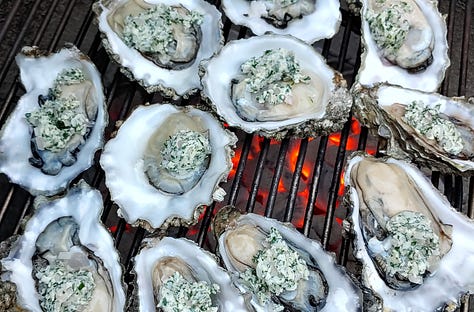

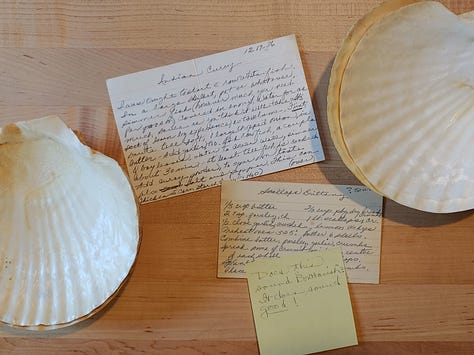

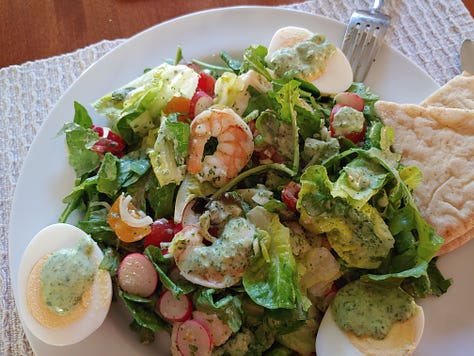
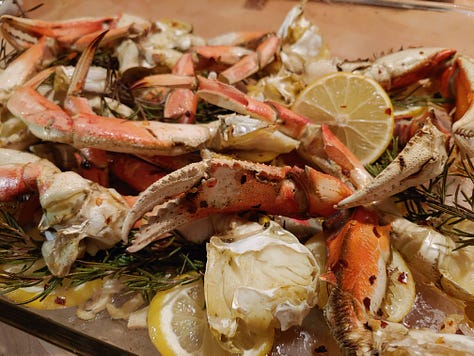
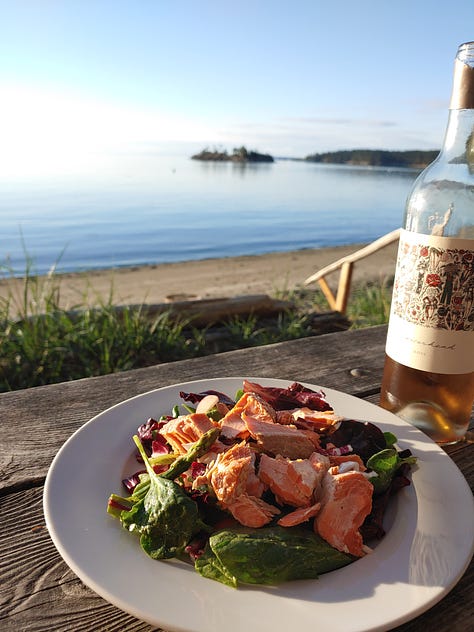
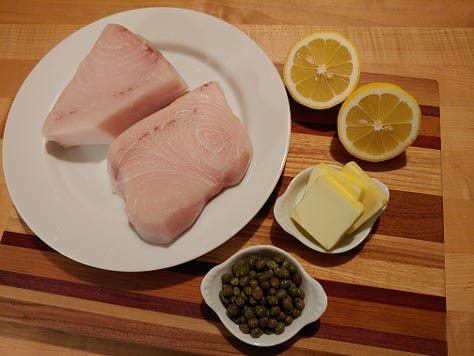
Having worked at and contributed to magazines for much of my career, I originally wanted to magazine-ify this newsletter. I’d considered a range of themes to cover and was going to treat them like magazine columns that would show up in rotation, picking 3 or 4 of those pre-determined themes to address each issue. I soon realized that kind of formality was antithetical to what’s most delightful about this platform: the freedom to vary the content issue to issue as long as I do my best to deliver on my promise to readers.
Speaking of which, as you likely haven’t seen it for a while (if ever), this is the tag line I gave this venture when I launched: where seafood lovers and the seafood curious can learn, engage and be inspired for more seafood adventures.
So…how am I doing??
If I could ask for one present from you on the occasion of this almost-anniversary, I’d love to hear what interests you about seafood, what types of topics you’ve enjoyed most thus far or might like to see more of. The poll below allows just 5 options and you can only choose one, so it’s posed as the one thing of most interest to you. You can always elaborate more in the comments below—and I hope you will!
I plan to come back from vacation refreshed, revived, raring to go as I launch into year three of Seafood Savvy. Your input will help me build even more momentum over this coming year.
Celebrating Local Seafood
I’d already started notes about an issue that will focus more on local seafood sometime before long. But a quick nod to the topic with a bit of timeliness. September 8 to 14 has been designated by the Local Catch Network as their fourth annual #FindYourSeafoodWeek (this is their Instagram page if you want to follow along for inspiration). It’s an effort to raise awareness for any and all who shop for seafood to consider sourcing from local, community-based, often smaller fisheries now and then. I wrote a bit about Local Catch in my second issue, having just attended a conference they put on up in Alaska. That context was about buying direct from the fishermen or farmers, whether that’s ordering oyster direct from a grower like Hama Hama here in Washington, or signing on with a subscription model that sends you a box with frozen fish from a particular fisherman or region.
Their website features a “seafood finder” that helps anyone track down particular types of seafood you may be looking for. Or you can browse the map to see what those in their network have available near you—sparking some new ideas perhaps! You’ll see that there are plenty of dots on the map that are well inland from the sea coasts (echoing my contention last issue that great seafood can be found across the country). Options you find may be retailers in their network committed to supporting local and smaller fisheries, or hub locations for pick-up from a CSF (community supported fishery, akin to CSAs). In general, the search results may send you to a fisherman who sells direct at a dock, or a company that ships directly to your door. And if nothing else, their #FindYourLocalSeafoodWeek is a good reminder to, now and then, maybe spice up our seafood shopping routine with something different that supports local, community-based fisheries that in turn support the community around them.
Some Favorites So Far
I just traipsed back through the 25 newsletters I’ve sent out and thought I’d share a few of my favorite items from among them.
a recipe for smoked oyster dip, which is so versatile I’ve come to think of it as “fill-in-the-blank dip”
a few notes from a trip to Lisbon, including a particularly great shop for stocking up on outstanding tinned seafoods
info about a cool company in British Columbia making leather from fish skin
I already linked above to a travel-focused issue, this one a companion that’s focused on my love of the sea, be it cruising in Europe or lounging on Orcas Island
on grilling seafood, the delicious possibilities
a recipe for salmon and celery root chowder, another one of those super-versatile preparations
overlapping seafood with another passion of mine: emphasizing the value of preserving family heritage recipes
a brief overview about sustainable seafood and tips for seeking it out when shopping
on seafood and cookbooks and a bit about how books have been part of my path
…..and thoughts on tuna melts! Clearly a popular topic, that issue has had more views than any other so far.
Two Recipes For You
In the last issue, I talked about the classes I’ve been teaching off and on at the Sun Valley Culinary Institute. There I shared one of the technique-oriented recipes from this summer’s seafood class. Here I’m sharing two others with you. One is from that same technique class, demonstrating how to shallow-poach fish. The other is from the class with recipes from the south of France, mussels steamed with pastis and fennel.
Shallow-Poached Sole with Dill-Butter Sauce
Traditional poaching is a method that submerges fish, usually completely, in a liquid such as just water, water with wine and/or herbs, a light fish stock. It cooks fish gently and leaves the fish moist, but flavor is lost into the cooking liquids. Shallow poaching is similar, though using just enough liquid to cook the fish and later be reduced a bit for the sauce—all the flavor retained. In this recipe, part of the poaching liquid is melted butter, for added richness. And I do love to use a delicious salted butter in this case, though I usually cook with unsalted. You could instead just use wine or stock, and stir in a tablespoon or two of butter when the liquids are reduced.
Sole fillets are uniquely suited for folding into these packets with herbs inside; other moderately thin, not too dense fish would work for shallow poaching, though skip forming packets and simply add the 2 tablespoons of herbs to the sauce for serving.
3/4 pound sole fillets
Kosher salt
1/4 cup plus 2 tablespoons chopped fresh dill and/or other tender herbs (flat-leaf parsley, chives, chervil, tarragon)
1/4 cup butter (Kerrygold salted or other top-quality butter)
1/2 cup dry white wine or stock (fish, shellfish, light chicken), or a mix
Cut a round of parchment paper about 1 inch larger in diameter than the pan you’ll be using to cook the fish. Lightly butter the parchment.
Lay the sole fillets flatter-side up on the work surface. Lightly salt the fillets and scatter 1/4 cup of the chopped herbs over them. Fold each fillet in thirds, starting with the thinner end folded over the center, then folding the thicker end over that. If the fillets are particularly thin or thick, you may want to fold in quarters or half accordingly.
Melt the butter in a medium sauté pan over medium heat. Add the wine and bring just to a low boil. Carefully add the sole packets to the pan, lay the parchment paper buttered-side down on top, pressing gently so it sits on the surface of the fillets. Simmer until the fillets are fully cooked (the tops will no longer be translucent), about 8 to 12 minutes; the liquid shouldn’t boil vigorously, reduce the heat to medium-low if needed.
Use a fish spatula to transfer the sole to a plate, cover with foil to keep warm, and set aside. Discard the parchment paper. Reduce the cooking liquids to a coating consistency, 2 to 3 minutes. Stir in the remaining 2 tablespoons of chopped herbs and taste the sauce for seasoning, adding a bit more salt if needed.
Arrange the sole packets on individual warmed plates, spoon the sauce over, and serve.
Makes 2 servings
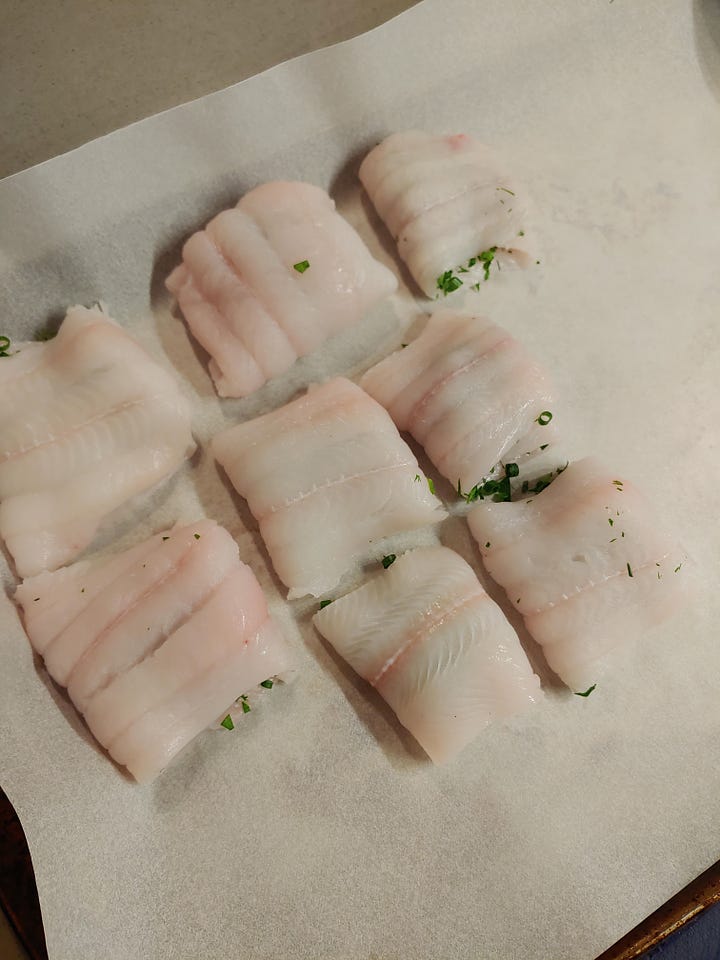
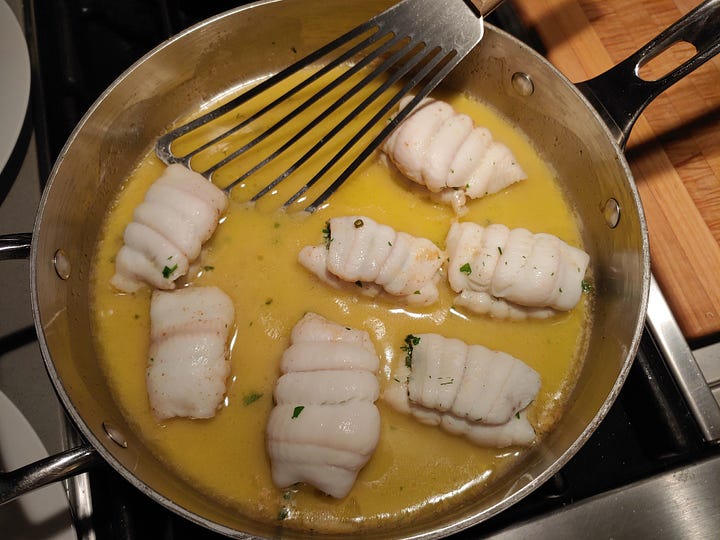
Steamed Mussels with Fennel and Pastis
Steamed mussels can be exquisitely simple, with little more than a splash of wine added to the pot. From that starting point there are countless possible variations, using different liquids and adding aromatics and other ingredients. It’s good to not go overboard, a few complementary things to embellish but not overwhelm the mussels. With a nod to the South of France, this version includes fennel bulb and pastis. When shopping for the fennel bulb, try to choose one with a generous amount of tender fronds for sprinkling over just before serving.
2 tablespoons unsalted butter
1 medium fennel bulb, trimmed, cored, and thinly sliced
2 shallots, thinly sliced
3/4 cup dry white wine
2 tablespoons pastis
3 to 4 pounds live mussels, scrubbed and debearded (just before cooking)
3 to 4 tablespoons coarsely chopped fennel fronds (if available)
Slices baguette or other bread, for serving (optional)
Put the butter in a pot large enough to generously hold the mussels and melt it over medium heat. Add the sliced fennel and shallots and cook, stirring occasionally, until tender, about 5 minutes. Stir in the wine and pastis, then add the mussels and cover the pot. After 2 to 3 minutes, gently stir the mussels with a large slotted spoon. Cover the pot and continue cooking, stirring once or twice more, until all, or most all, of the mussels have of opened, 2 to 4 minutes longer.
Scoop the mussels into shallow bowls, discarding any that did not open, and distribute the fennel and cooking liquids evenly among the bowls, leaving any grit behind in the pot. Scatter the chopped fennel fronds over and serve right away, with bread alongside.
Makes 4 servings
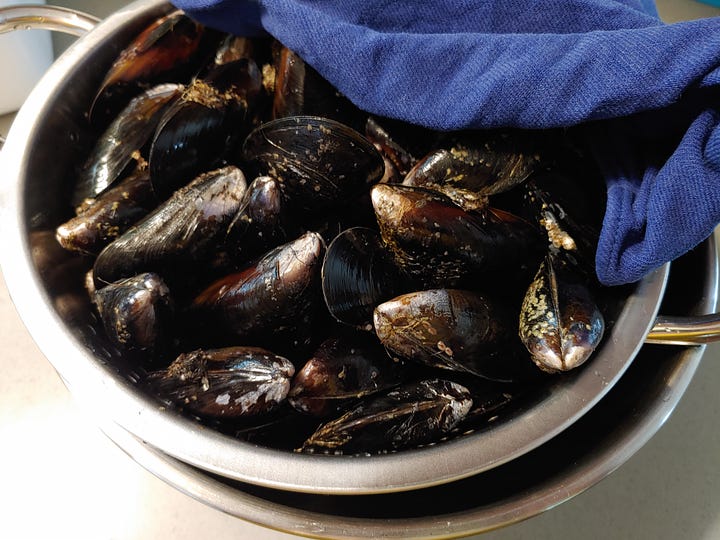
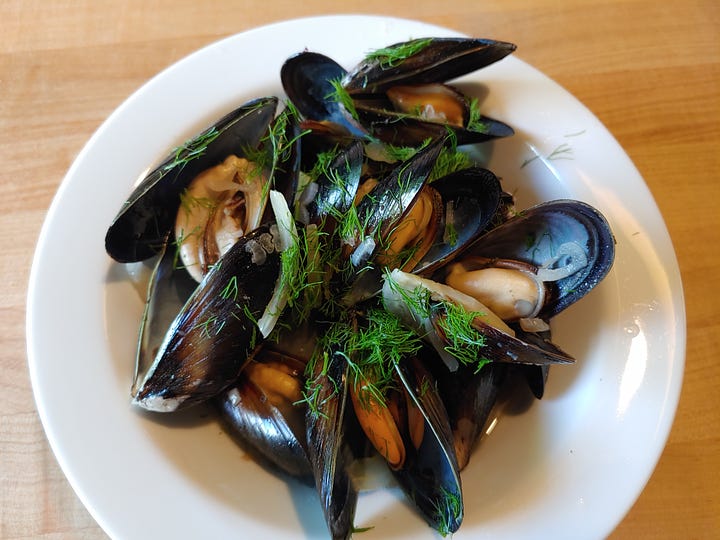





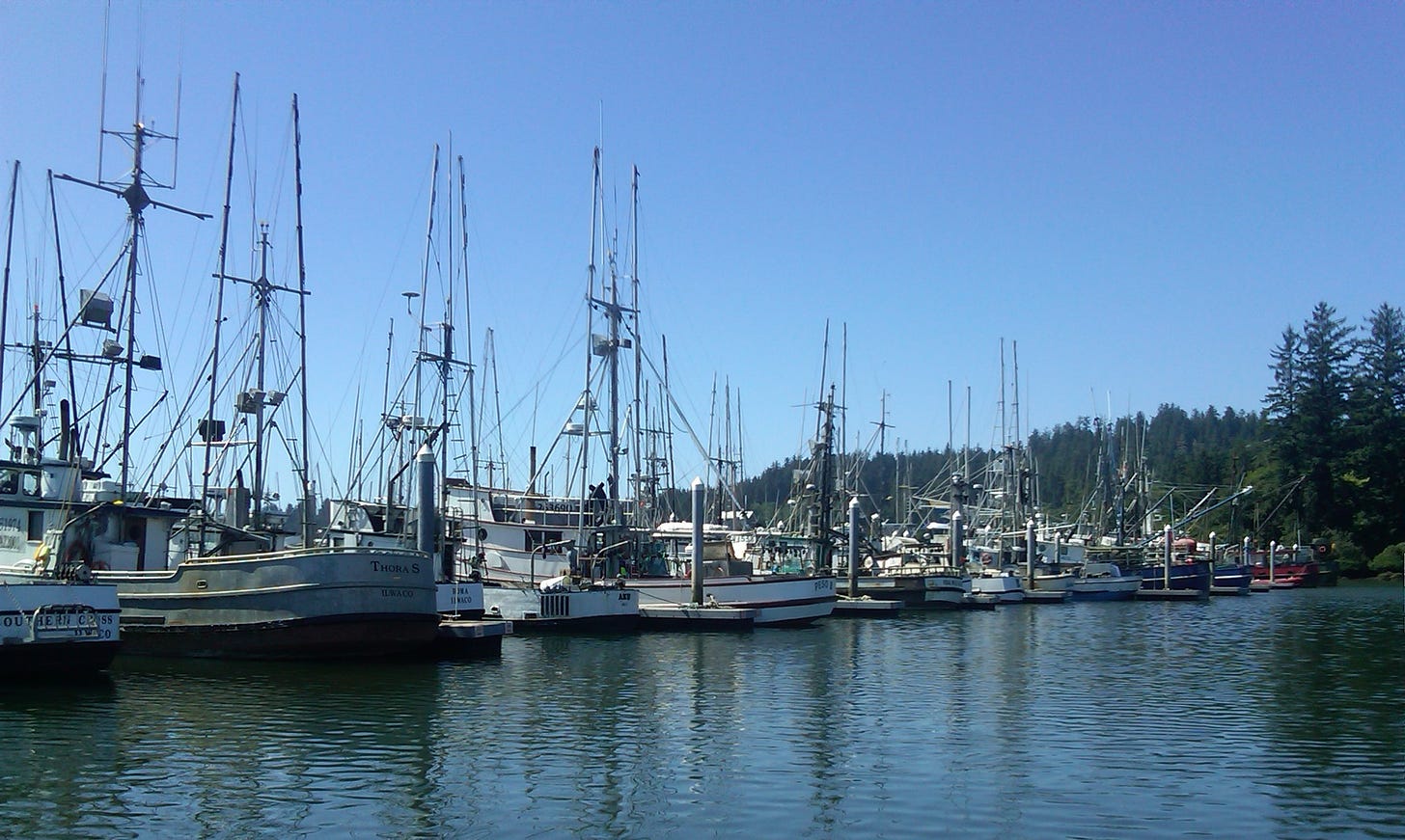
I am interested in all 5 of your listed Seafood Topics.